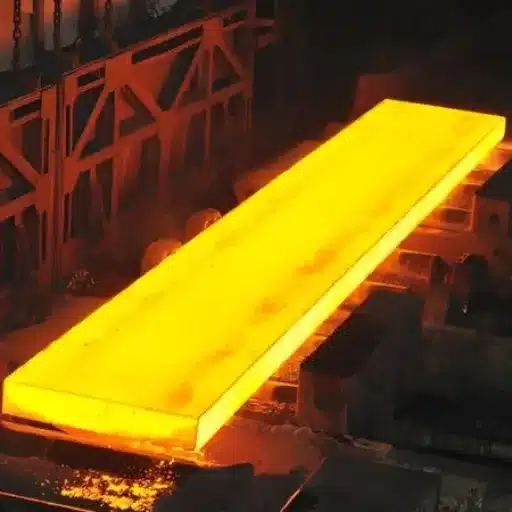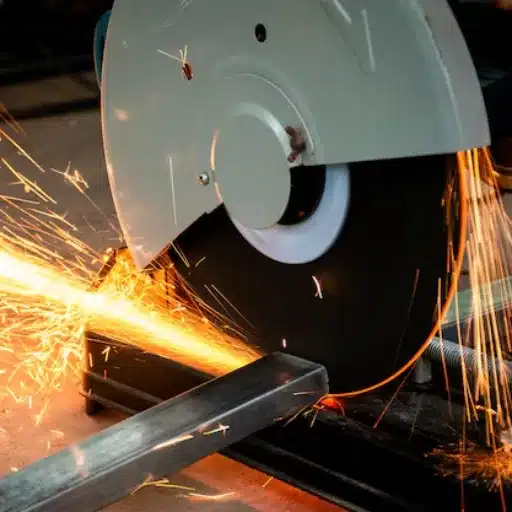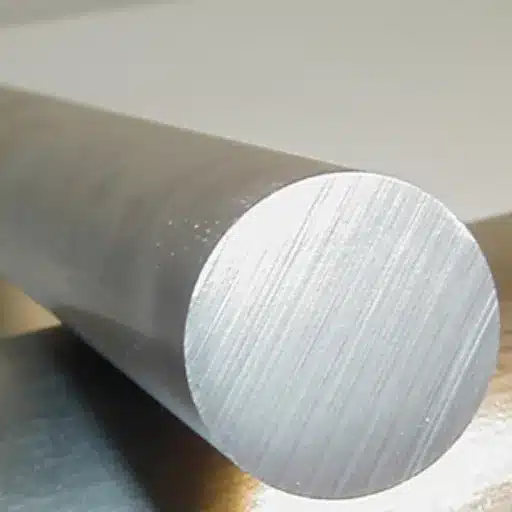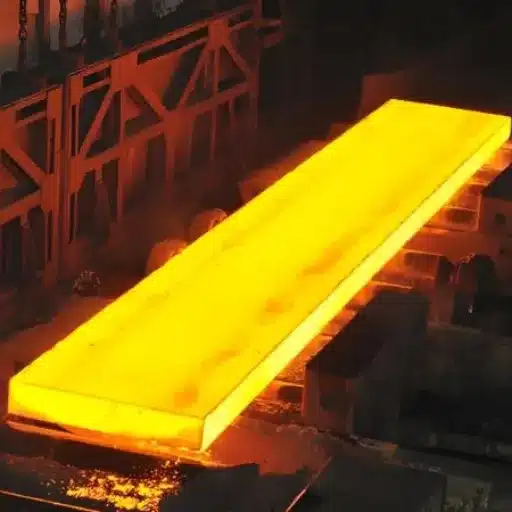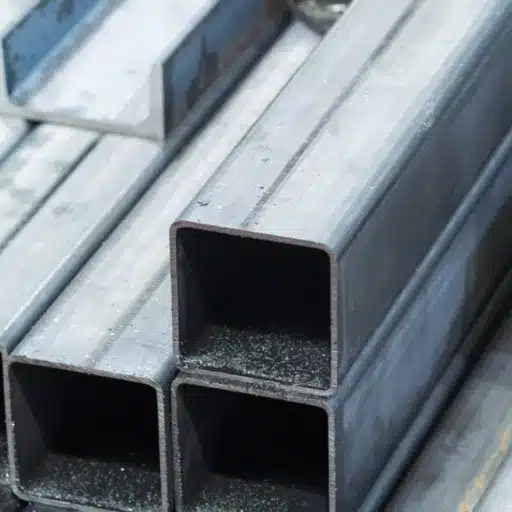The melting point of steel and other metals is an understanding that is really critical in basically all industries like from building and making to aeronautics and engineering. This basic property not only defines the manner a metal may be used i.e. shaping, welding, etc., but also determines its performance in extreme conditions. The article at hand will delve into the fascinating melting point issue of different metals revealing how they are changed by such things as composition and temperature. Industry professional or just a curious person wanting to know more about material science, this guide will give you the reason why melting points are important and how they influence the world around us in a big way.
An Introduction to Steel and Its Significance
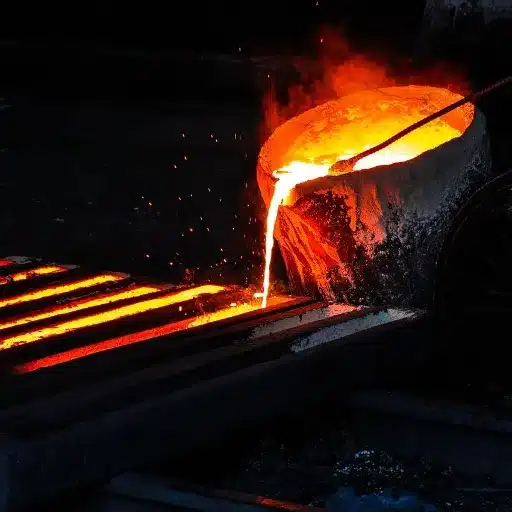
Steel melting point, composition, alloys, and additional elements are the major factors that determine the melting point of steel. A proper understanding of these elements will enable us to forecast and optimize the performance of steel better in different applications, mainly if the conditions are extreme.
What Is The Melting Point Of Steel?
Steel is an alloy mainly consisting of iron and carbon, and it has a melting point range rather than a single temperature. This is a result of the different compositions of steel which can include other metals like manganese, chromium, nickel, vanadium, etc. Typically, steel has a melting point of 2,500°F to 2,800°F (1,370°C to 1,540°C), although the melting point varies with type and grade. For example, carbon steel has a melting point approximately 2,500°F (1,370°C), and on the other hand, stainless steel with the addition of chromium and nickel, reaches the highest point of the melting range of 2,800°F (1,540°C).
Melting point is determined by a number of factors, carbon content being one of them. Usually, the melting point of steel will decrease with the increase of carbon content which in turn will lead to greater hardness of the steel but lower ductility. Besides, various types of steels (tool steel, stainless steel, or high-speed steel) are specifically designed for particular industrial applications that may require different melting and solidification characteristics.
Metal’s Versatility in Different Industries
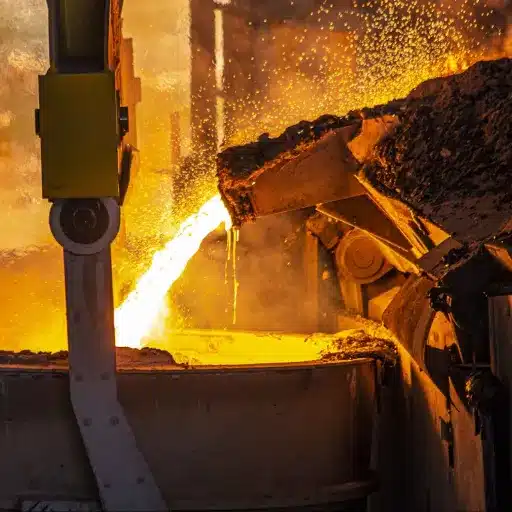
1
Construction Industry
Steel is the backbone of the construction industry, mainly used for structural frameworks, bridges, and skyscrapers. Architectural-grade steel not only provides strength, but also enables the designer to be creative in his/her work. The World Steel Association states that about half of the total steel produced in the world goes into buildings and infrastructure. The enormous steel structure that supports the Burj Khalifa in Dubai, the tallest building in the world, not only provides stability and safety but also is an eye-catching architectural marvel.
2
Automotive Industry
Steel is indispensable in the manufacture of cars, mainly in such parts as the body, engine, and safety components. Advanced High-Strength Steels (AHSS) being common in the industry, manufacturers can produce cars that are light but strong, thus saving fuel with no compromise on safety. It is estimated that 60% of a current vehicle’s structure is made of steel. For instance, the use of AHSS in various grades has led to a reduction in vehicle weights by as much as 25%, thus cutting down vehicle emissions, improving safety, and at the same time making them more attractive to potential customers.
3
Aerospace Industry
Aerospace considers grades of steel, such as unbreakable stainless steel and high-strength alloys, for engine parts, landing gears, and construction. Components made from such materials are highly resilient, able to withstand extreme temperature, and are also not corroded easily. A big part of the steel used in the making of Boeing 747 is for the aircraft’s mechanical parts, proving its contribution to the increased reliability and longer life of the aircraft.
Melting Point of Steel
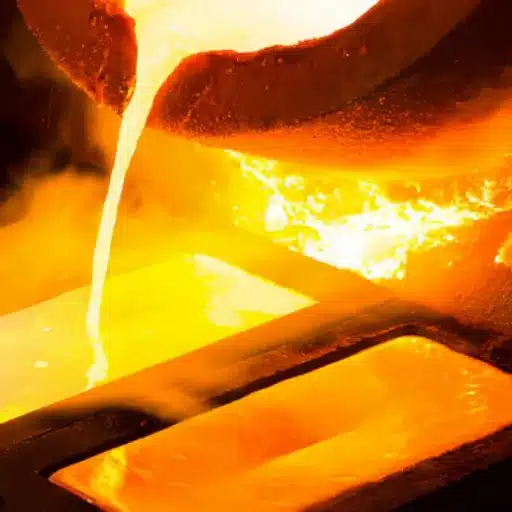
The bleeding of the steel is affected by several factors from my perception, which are as follows: the alloying elements present, the carbon content, and the treatment processes. For example, the melting range is raised when elements like chromium or nickel are added. On the other hand, carbon content lowers the melting range slightly. Moreover, the manufacturing and heat treatment methods can play a role in determining the temperature of the transition point of steel from solid to liquid.
Right Nickel Alloy Supplier Choice Importance
Choosing the proper supplier for nickel alloy plates and sheets is an important step that can determine your project’s success. A trustworthy supplier does not only provide first-class materials but also gives technical expertise and dependable support during the whole procurement process. Suppliers’ assessment should include material certifications, inventory availability, and manufacturing capabilities to meet your requirements among others. The supplier complying with ISO 9001, AS9100 or any other industry-specific accreditation is assured to be operating under the strictest quality standards.
A perfect supplier would also have years of experience with the supply chains of the aerospace, energy, or chemical processing industries and be able to offer customized solutions that deal with even the most complex engineering problems. Also, the availability of a wide variety of nickel alloy grades and customization options (e.g., different plate dimensions or finishes) can make your operations far more efficient by shortening the lead times and giving you the exact materials for optimal performance. Relying on good suppliers can bring about less production interruption, more product life, and better industry demand meeting efficiency.
Melting Temperature of Impurities’ Impact
Impurities present in the steel can greatly affect the melting temperature of steel causing the change of material performance and its suitability for various applications. The most common elements such as sulfur, phosphorus, and oxygen, which are usually found in negligible amounts as impurities, can drop the melting point of steel. For instance, sulfur acceptance in steel can melt inclusions, leading to weakened steel and possibly yielding melting at lower temperatures. Phosphorus is notorious for reducing ductility and toughness, especially if the material is to perform at low temperatures. Moreover, it can cause melting range to drop slightly.
Research Findings:
- Oxygen content as high as 0.01% can lead to oxide inclusions, resulting in a lowered melting point by approximately 10-20°C
- Excessive copper (greater than 0.4%) can lead to hot shortness—a condition that reduces the solidification range of steel
- Even minute amounts of certain impurities can cause significant effects on melting properties
Melting Points of Various Metals
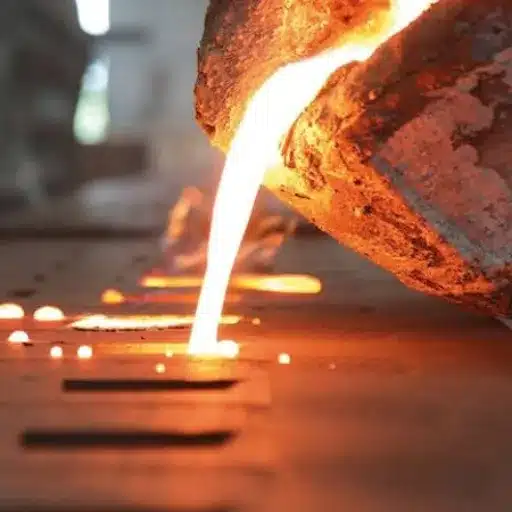
Knowing the melting points of metals is very important for engineering, manufacturing, and material sciences, among others. The following are the common metals with their melting points:
| Metal | Melting Point (°C) | Melting Point (°F) | Key Applications |
|---|---|---|---|
| Aluminium (Al) | 660°C | 1220°F | Automobile and aircraft industries |
| Lead (Pb) | 327°C | 621°F | Batteries and radiation-proofing |
| Zinc (Zn) | 419°C | 786°F | Die-casting and galvanization processes |
| Gold (Au) | 1064°C | 1947°F | Jewelry and electronic industries |
| Copper (Cu) | 1085°C | 1985°F | Electrical wiring and thermal systems |
| Nickel (Ni) | 1455°C | 2651°F | Alloys and plating applications |
| Iron (Fe) | 1538°C | 2800°F | Construction and manufacturing processes |
| Titanium (Ti) | 1668°C | 3034°F | Aerospace and medical applications |
Practical Applications of Understanding Melting Points
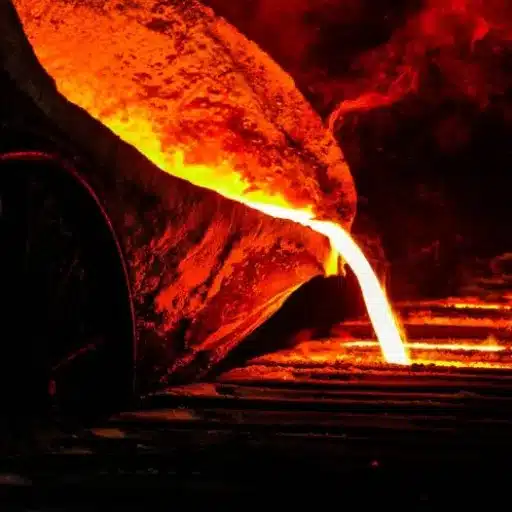
Knowing melting points enables me to pick the proper materials for particular uses. For instance, materials with high melting points are most suitable for industries with extreme heat like aerospace and manufacturing, whereas low melting point materials are used in cooling systems and cryogenics. This information makes it possible for me to choose the right materials for the optimization of performance and energy efficiency.
Implications in Metallurgy and Manufacturing
Melting point understanding has been one of the most important factors in metallurgy and manufacturing taking place today. It has influenced the different kinds of materials that are used, the processing techniques that are applied, and ultimately, the quality of the product that you get. One of the applications is the use of tungsten, which is a metal with melting point as high as 3,422°C (6,192°F) and thus it can be used in places with high temperature like the aerospace or defense industries. On the other hand, lead and tin alloys with low melting points are being used for soldering and the electronics industry because they are easy to work with at lower temperatures.
Industry Example: Aerospace Superalloys
The example is the use of superalloys in the turbine engines of planes. Such materials are engineering with great care to bear not only the intense heat but the mechanical stress as well and a great deal of that is dependent on the control of processes regarding melting and solidification. Nickel-based superalloys are the ones that have their melting point usually above 1,300°C (2,372°F); they are needed for the manufacturing of turbine blades that are high in performance and maintain strength even at high temperatures.
Metallurgy Breakthroughs Affecting Melting Points
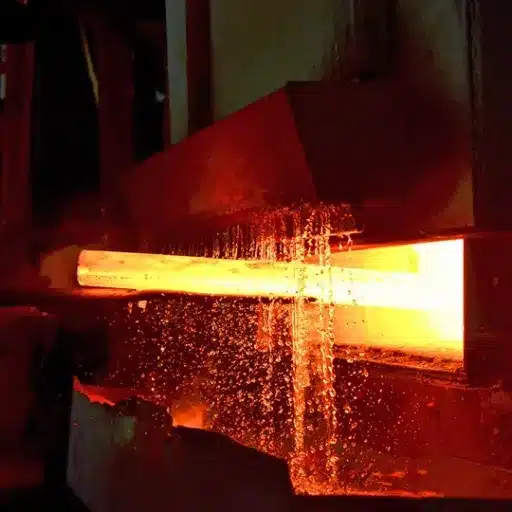
Among the most significant contributions of metallurgy to the melting point study is the possibility to tailor the melting point of new and existing alloys and materials depending on their applications. Melting point tuning has become well-developed through innovations such as precise alloy compositions and advanced heat treatments, resulting in applications that are more efficient and performing better.
Alloys That Changed The Landscape
Dual-Phase Steels (DP Steels)
DP steels are the phases of modern alloys that combine the best of both worlds – high strength and the possibility for excellent-forming. DP steels lean toward low carbon and consist of martensitic and ferritic microstructures in varying proportions. The main application for this type of steel is serving the auto industry where it aids in the resistance of the vehicle to crashes while at the same time reducing the total weight of the car. An instance of this is using Dual-Phase steel with a tensile strength of up to 980 MPa in body panels of cars, which results in the lightness of the design and protection of safety at the same time.
High-Entropy Alloys (HEAs)
A typical method includes bringing together highly pure metals into powders and then mixing them equal amounts by weight to form five or more components in one alloy. Non-equiatomic alloys on the other hand usually contain a primary metal and four or more other metals or elements. HEA is one of the new materials developed with this technique that, despite their use being limited to research so far, have already proven to be very successful and beneficial because they can already be applied to such demanding areas like aerospace and biomedical with still being able to handle and even surpass the usual stresses of the materials that are considered conventional.
Advanced High-Strength Steels (AHSS)
Third-generation alloys for weight reductions and safety are covered in AHSS. One such steel grade capable of achieving up to 1500 MPa tensile strength enables the production of thinner parts by the manufacturer and thus material costs and energy consumption are reduced. In fact, regulations concerning the vehicle that is fuel-efficient and having minimum emissions are to be met through AHSS grades only.
Research in Steel Melting Technology
In the near future, our planet’s steel melting technology will have changed the face of the industry by boosting productivity and simultaneously incurring less environmental damage. This is particularly the case with the advent of Electric Arc Furnace (EAF) technology. Today EAFs produce about 30% of the global steel output and are increasingly accepted as a result of the comparatively lower carbon footprints they have vis-a-vis old-fashioned blast furnaces. The use of scrap steel as a primary input allows EAFs to produce steel with up to 75% fewer CO2 emissions per ton.
Advanced Refractory Materials
Another path-breaking development has been the use of high-performance refractory materials that not only prolong furnace life but also lead to less frequent furnace shut down for repairs and maintenance. Today’s composite refractories are able to take the heat of above 3,500°F, besides this they also help in making the process of steel-making more efficient in terms of energy use and less aggressive in terms of wear and tear.
Reference Sources
-
Hydraflu
- Title: Comparing the Melting Points of Different Types of Steel
- URL: https://www.hydraflu.com/melting-point-of-steel/
- Description: This source provides a comprehensive overview of the melting points of various steel types, making it a valuable reference for understanding steel’s thermal properties.
-
Industrial Metal Supply
- Title: Understanding the Melting Points of Metal
- URL: https://www.industrialmetalsupply.com/blog/understanding-the-melting-points-of-metal
- Description: This blog explains the melting points of different metals, including steel, and their applications in various industries.
-
Metal Supermarkets
- Title: The Melting Points of Metals
- URL: https://www.metalsupermarkets.com/melting-points-of-metals/
- Description: This source discusses the significance of steel’s melting point in construction, automotive, and other sectors, providing practical insights for industry professionals.
Frequently Asked Questions (FAQs)
How does the melting point of stainless steel compare to other metals?
The melting point of stainless steel is usually set at a point higher than that of other metals. The melting range of stainless steel is about 1400°C to 1450°C (2552°F to 2642°F), and this property makes it an ideal candidate for the areas of application where high strength and corrosion resistance are the prime requirements at the same time.
What factors influence the melting point temperature of steel alloys?
The melting temperature of the steel alloys can be affected by several factors, starting with their chemical makeup, which consists of different classes of steel alloys and the presence of nickel and tungsten, for example. Differences in atomic structure and alloying elements can also lead to melting points being different.
Can you explain the process of how steel melts?
The melting of steel is done through high temperatures that are applied to it in a furnace until the steel completely converts to liquid state from solid. Throughout this procedure, there is an equilibrium between the solid and liquid phases, and the temperature must reach the melting point for the whole steel to become a liquid.
What are the highest melting points among common metals used in manufacturing?
Of the commonly used metals, tungsten has one of the highest melting points at over 3422°C (6192°F), whereas nickel melts at around 1455°C (2651°F). The fact that these metals can stand such high temperatures is the reason they are employed in the industries that require strong resistance to heat.
How does cast iron’s melting point compare to that of steel?
Cast iron usually possesses a melting point lower than that of steel, and its typical values are within 1150°C and 1300°C (2102°F and 2372°F) range. The difference is related to the fact that cast iron has a higher carbon content than in the case of steel which influences its melting point.
Key Takeaways
Understanding the melting points of steel and other metals is fundamental to advancing technology, improving manufacturing processes, and creating sustainable solutions across industries. From aerospace to automotive, from construction to electronics, this knowledge continues to shape the future of material science and engineering.

